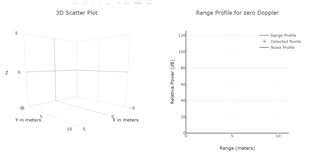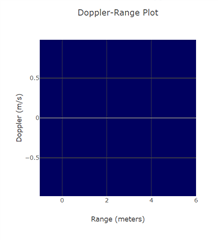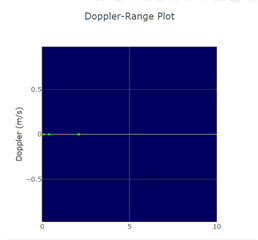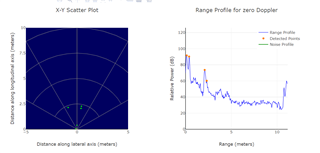Other Parts Discussed in Thread: AWR1642,
Hi,
Posting this inquiry in behalf of customer.
"
I have the AWR1642 and the AWR6843
I am using the python parser provided for the lab Oob_parser.py as i would like to have direct access to the data. There is a function readandparseUart that returns the data
# Point Cloud
# 2. Target List
# 3. Target Indexes
# 4. number of detected points in point cloud
# 5. number of detected targets
# 6. frame number
# 7. Fail - if one, data is bad
# 8. classifier output
Is there information concerning the actual structure of the data returned by the function ? lime how to I have access to data from 1st , 2nd and 3rd target separately ?
I created the UartReader.py file in order to plot the data returned by the oob_parser through the readandparseUart function. I found The oob_parser in \ti\mmwave_industrial_toolbox_4_7_0\labs\people_counting\visualizer
See attached files. CS0579491.zip
My end goal is to determine the influence of changes in the chirp configuration on the radar's performance. I therefore use the oob_parser in order to have access to info like the target's x,y,z position and it's range (distance from the radar). I would just want to know if the data returned by the function is already converted from the Q_format to meters. I would also like to know how i could determine the target's range based on the point cloud's range"
Thank you in advance.
Regards,
Maynard





